Workplace productivity affects more than the bottom line. When you maximize productivity you can drive growth and revenue, making your business more competitive and successful while fostering a positive workplace, which can in turn result in higher employee morale and retention rates.
That’s why, when it comes to improving organizational efficiency, top companies such as Vanguard and PayPal streamline workflows, implement Agile management styles and use advanced technology solutions.1 They promote creating a culture of continuous improvement, encouraging employees to innovate and find new ways to work more effectively, to achieve better outcomes and adapt more quickly to new challenges.
Learn more about productivity strategies and best practices that help improve organizational effectiveness and foster employee engagement for better organizational performance.
Tips to improve workplace productivity
Precision and planning are key to a productive business, allowing leaders to provide the strong guidance a team needs.
Establish clear goals and priorities
One key to less wasted time and boosting organizational productivity levels is setting clear goals and priorities. Without clear objectives, it’s easy to waste time on unimportant tasks.
One method of goal-setting is called SMART goals. SMART goals can be set at all levels of a business from goals for an individual employee to the sales goals of an entire organization. These goals are:2
- Specific: What precise task do you want to achieve? Instead of setting a goal that is "increase customer satisfaction," state exactly how you will do so.
- Measurable: How will you quantify success? Use key performance indicators.
- Achievable: Is this goal practical? Do you have the resources you need to accomplish your goal?
- Relevant: Does this goal align with greater objectives or the goals of your team/organization?
- Time-Bound: When does the goal need to be accomplished by?
SMART company goals help employees to stay focused on what matters while implementing helpful guardrails to the purpose of their work.
In order to accomplish when it comes to prioritizing the tasks necessary to reach goals, many busy leaders employ the Urgent Important Matrix Quadrant or Eisenhower Matrix. This matrix distinguishes between important, unimportant, urgent, and not urgent tasks. When using this method, individuals plot each task from a to-do list throughout the quadrants and start with anything that they deem both important and urgent.3
Delegate
Sometimes, the best way to improve productivity isn't through complex processes or changing the organizational structure–all it takes is remembering that you can’t do everything yourself. Delegating both evens out the work required from employees to prevent burnout and poor mental health. It also helps individuals feel valued, giving them a sense of ownership and accountability for the overall success of a project.
As a leader you can use the aforementioned Eisenhower Matrix to plot your to-do list and identify the most important and urgent tasks. Then determine which things on your list require your direct involvement that you'll keep as your own tasks versus those that are suited to the abilities of other team members.
Practice time management
A real key to improving organizational effectiveness lies in a skill many people work on throughout their lives: time management. Time management is an ongoing process that requires commitment on an individual level. Effective strategies like setting SMART goals and prioritizing are some of the key steps of managing time well. Then, try out different techniques like setting timers for focus and taking breaks, to find and figure out what are the most efficient processes for you.
Leaders can encourage employees to use tools like to-do lists, calendars and time trackers to help them with time management and workload too. There are dozens of expert-recommended productivity apps that exist such as Clockify to record and analyze the time spent on tasks or Jira, Workfront, and other project management or issue-tracking software to help plot out the time and resources required for projects.4
Streamline processes
To improve productivity in a business you need to know how it's already doing and what might be getting in the way of further success. Analyze your team’s workflows and set key performance indicators against which to measure productivity levels. Begin by mapping out your current processes and documenting each step. Evaluate the quality of the work accomplished and the time and resources spent. Your team is a valuable source of feedback and can help identify pain points. This audit can reveal redundancies, bottlenecks or unnecessary steps that might be halting progress.
Boost productivity with these hacks for professionals
Bring order and balance to routines for management and for employees alike with these productivity hacks.
Use technology
Technology is a valuable resource for your team. Try using popular productivity apps for project management, communication, focus and note-taking.5 Take advantage of tools and software that automate repetitive responsibilities and similar tasks such as follow-up emails or file back-ups and improve internal communication and access. For example, cloud storage solutions let people retrieve files anywhere they work.
Minimize distractions
First off, avoid multitasking. Despite popular belief, multitasking increases stress while decreasing the quality of your work.6 An organized workspace free from clutter and equipped with ergonomic furniture also helps you stay focused on the task at hand. Cutting down on environmental distractions and physical discomfort allows you to commit to your work while you’re working. A strategy for keeping your concentration sharp is the Pomodoro Technique which suggests alternated regular focused bursts of work with short breaks.7
Maintain a healthy work-life balance
Regular breaks, physical activity and flexible work arrangements can help employees feel supported at work. Time to recharge helps employees avoid burnout, consistently perform their best and can lead to increased motivation, productivity and more engaged employees.
Let employees know that when they're off the clock on break, they're expected to unplug. Digital detoxing–limiting screen time outside of work hours–can improve well-being and make individuals more productive during work hours.8
Implementing Agile management practices
Unlike traditional project management methods that follow a linear path, Agile management involves breaking projects into small, manageable increments called sprints.9 It can improve team efficiency, product quality and employee satisfaction.10
Read through the steps below to implement Agile management in your workplace. Keep in mind that though there are dedicated Agile management software solutions that facilitate iterative planning, communication and adaptation, it's crucial to understand the process before you're in the midst of it.11
Use iterative planning
Divide projects into smaller tasks, planning and executing short cycles in addition to grand arcs. This ensures continuous reassessment and refinement of goals based on feedback and changing requirements.
Foster team collaboration
Agile principles emphasize the importance and benefits of regular communication and collaboration. Daily stand-up meetings, sprint reviews and retrospectives keep employees on the same page and promote unity.
Employ an adaptive project management style
Agile allows teams to be flexible and responsive. By continuously evaluating progress and incorporating feedback, teams can pivot to make necessary adjustments.
Fostering a culture of continuous improvement
Encourage members of your organization to learn, innovate, and approach failures as opportunities for learning and improvement to improve the overall employee experience at your business.
Encourage feedback
Encourage open and honest communication between colleagues. Regular feedback sessions and easy-to-use suggestion tools help identify areas for improvement as called out by your own employees and can help generate new ideas.
Promote learning and development
Invest in on-the-job training sessions and workshops to develop employee skills and knowledge. For example, you might ensure that administrative staff receive training in project management software solutions. You want team members to have all the resources and support they need.
Recognize innovation
Celebrate efforts and reward new ideas and improvements. By recognizing employees’ contributions, you will boost morale and inspire others to think creatively as well. You’ll also introduce fresh ideas and avoid the risk of an echo chamber. Create opportunities for employees to publicly recognize their coworkers for a job well-done to add to the sense of collaboration and foster a positive job environment.
Increase productivity in your business
These approaches to overall productivity help teams stay efficient and adaptable. Improve your workplace productivity and drive organizational success with streamlined processes, the right technology and a culture of continuous improvement.
- Retrieved on June 25, 2024, from businessmap.io/blog/agile-companies
- Retrieved on June 25, 2024, from mindtools.com/a4wo118/smart-goals
- Retrieved on June 25, 2024, from forbes.com/sites/drsamanthamadhosingh/2024/01/31/10-easy-productivity-hacks-for-busy-leaders
- Retrieved on June 25, 2024, from forbes.com/sites/forbestechcouncil/2023/05/10/20-expert-recommended-tech-tools-to-boost-professional-and-personal-productivity
- Retrieved on June 25, 2024, from pcmag.com/picks/best-productivity-apps
- Retrieved on June 25, 2024, from forbes.com/sites/williamarruda/2024/03/05/why-multitasking-is-bad-for-your-career-and-what-to-do-instead
- Retrieved on June 25, 2024, from techtarget.com/whatis/definition/pomodoro-technique
- Retrieved on June 25, 2024, from forbes.com/sites/forbesbusinesscouncil/2024/03/26/unplugging-to-upgrade-the-entrepreneurial-edge-of-digital-detox
- Retrieved on June 25, 2024, from techtarget.com/searchcio/definition/Agile-project-management
- Retrieved on June 25, 2024, from geeksforgeeks.org/what-are-the-benefits-of-agile
- Retrieved on June 25, 2024, from thedigitalprojectmanager.com/tools/agile-project-management-software

